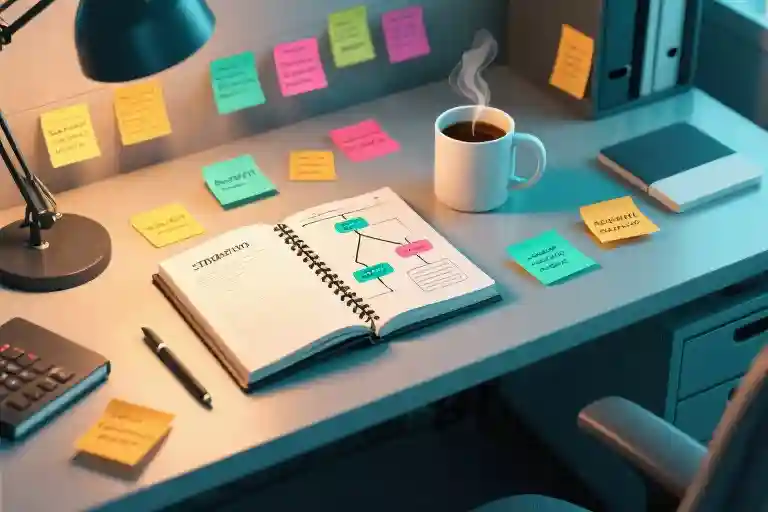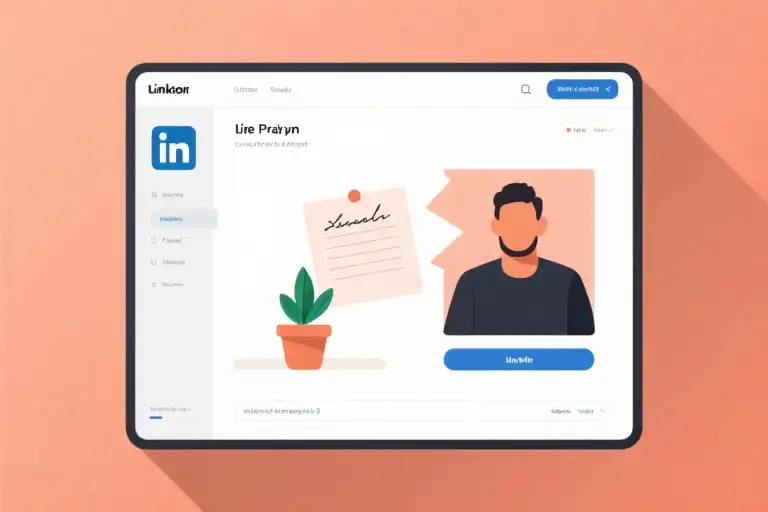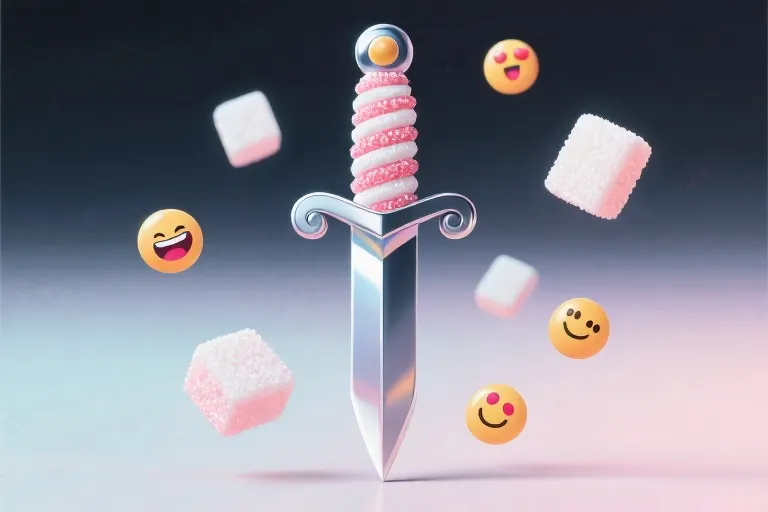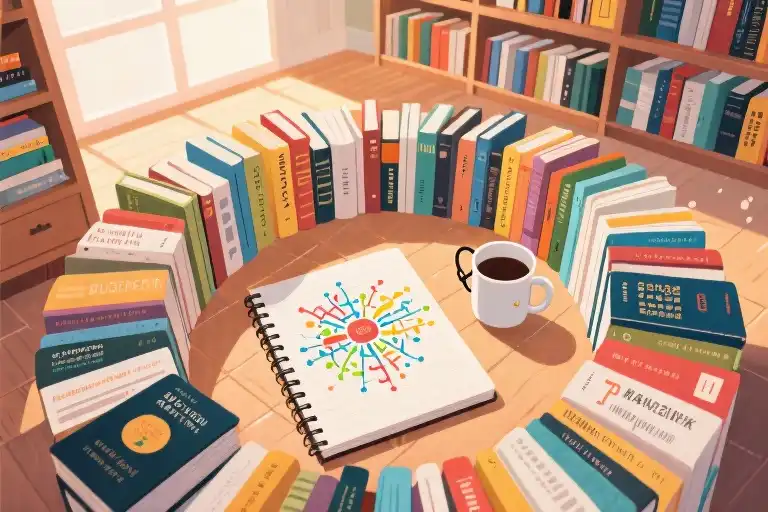Good ideas don’t sell themselves. Stories do. This truth hit me when I first held my published novel at eighteen—a 200-page creation that somehow emerged from six months of chaotic typing between design school assignments. The designer in me obsessed over kerning and Pantone swatches, while the writer secretly crafted character arcs in margins of sketchbooks.
What surprised me wasn’t completing the book (though teenage me certainly didn’t see that coming), but realizing how storytelling bled into everything afterward. Client presentations became hero’s journeys where users overcame interface dragons. Design rationale transformed into origin stories about pixels with purpose. Even explaining UX patterns to engineers worked better when framed as “Once upon a time, a frustrated button…”
We’re all collectors of lived experiences, yet so many brilliant professionals freeze when asked to share theirs. The engineer who architected a groundbreaking system defaults to technical specs. The doctor with breakthrough patient outcomes recites sterile statistics. The designer—yes, even us visual storytellers—often hide behind mood boards when we should be revealing the human drama behind every design decision.
Here’s the uncomfortable gap: We’re trained to develop expertise, but rarely taught to make that expertise compelling. Schools drill us in calculus, coding, or color theory, yet leave narrative structure to English electives. No wonder corporate decks overflow with bullet points while kindergarteners—armed with just three story cubes—can hold rooms spellbound.
That eighteen-year-old novelist didn’t know it then, but she’d stumbled upon a universal truth: Storytelling isn’t a literary specialty—it’s the operating system for human connection. Whether you’re convincing investors, comforting patients, or explaining cloud infrastructure to your grandma, the mechanics remain the same. Context creates relevance. Conflict generates engagement. Resolution builds trust.
So why do so many smart people tell such forgettable stories? Perhaps because we mistake complexity for sophistication. We armor ideas in jargon when they’d travel farther in denim. We prioritize comprehensiveness over emotional resonance. Or maybe—and this stings—we’ve never considered that our work might be worthy of a narrative at all.
The designer in me wants to fix this with frameworks (we’ll get to those). The writer knows better. Before templates comes mindset: Your expertise isn’t just what you know—it’s how that knowledge changed someone’s world. Your career isn’t a resume—it’s an evolving anthology where every project adds another chapter. The presentations you dread? Those are campfire moments waiting to happen.
That book I wrote at eighteen? It’s embarrassingly out of print. But the storytelling instinct it awakened still shapes how I explain design systems to developers, justify budgets to executives, and yes—convince my nephew that broccoli are tiny dinosaur trees. The formats change. The fundamentals don’t.
Which leaves us with the real question: What unforgettable story is hiding in your last project report?
The Underestimated Superpower of Storytelling
The resume with a compelling narrative gets 40% more responses on LinkedIn. That statistic alone should make us pause. In a world drowning in data and bullet points, the ability to weave information into stories isn’t just nice to have—it’s becoming the differentiator between being noticed and being ignored.
Neuroscience confirms what parents have known instinctively: children retain information 300% better when delivered through stories. The same principle applies to boardroom presentations, client pitches, or explaining complex concepts to non-technical colleagues. Our brains are wired to process and remember stories, not isolated facts.
What’s fascinating is how universal this need for storytelling proves to be across professions. The surgeon explaining a procedure to anxious patients, the software engineer making a case for architectural changes, the teacher bringing history to life—all rely on narrative structures to make their messages stick. Yet most professional training programs treat storytelling as an elective skill rather than core curriculum.
The gap isn’t about recognizing the importance of stories—most professionals intuitively understand their value. The real challenge lies in the how. How do you extract stories from dry project reports? How do you transform technical specifications into compelling narratives? How do you make your unique professional journey resonate with others?
This missing piece explains why brilliant ideas often fail to gain traction while mediocre ones with great storytelling behind them spread like wildfire. The substance exists, but without the vessel of story to carry it, even the most valuable insights get lost in translation.
Consider two versions of presenting the same work achievement:
Version A: ‘Increased quarterly sales by 27% through new outreach strategy’
Version B: ‘When we noticed our traditional emails were getting lost in crowded inboxes, we experimented with handwritten notes to high-value clients. One recipient later told us our note arrived the day her father passed away—that personal touch made her move her entire portfolio to us, sparking a 27% sales surge that transformed how we approach client relationships.’
The difference isn’t in the achievement itself, but in the narrative scaffolding that makes the achievement meaningful and memorable. This transformation from fact to story requires specific frameworks anyone can learn—which brings us to the real question: not why storytelling matters, but how to consistently do it well across professional contexts.
The Universal Storytelling Frameworks You Need
Stories follow patterns. That’s what makes them teachable. After years of writing fiction and pitching design concepts, I’ve found two storytelling frameworks that work across professions – one for the boardroom, another for the living room.
The CAR Framework for Professional Impact
Context-Action-Result (CAR) transforms dry achievements into compelling narratives. Here’s how it worked for my UX redesign project last quarter:
Context: Our app had 72% drop-off at the payment page (the conflict). Action: I led user interviews uncovering that security icons triggered anxiety (the twist). Result: Simplified trust badges increased conversions by 31% (the resolution).
Notice the structure: Problem → Discovery → Quantifiable outcome. This works for:
- Engineering reports (“The legacy system crashed weekly → We rebuilt the cache layer → Downtime reduced by 90%”)
- Medical case studies (“Patient presented X symptoms → We trialed Y treatment → Mobility improved by Z%”)
The magic lies in the middle action – your unique contribution. Most professionals either drown listeners in context or jump straight to results. The action bridge is where your value lives.
Magic 3 Structure for Personal Connection
With my kids, I use a simpler pattern: Setting → Conflict → Resolution. Last summer’s camping trip became:
Setting: “We were roasting marshmallows under Utah’s stars…” Conflict: “…when a skunk started waddling toward our tent.” Resolution: “Remember how we slowly backed away singing ‘Twinkle Twinkle’? That’s why we now check for animal holes!”
This rhythm mirrors classic fairytales. The conflict creates tension (activated their mirror neurons), while the resolution delivers a takeaway. Try adapting:
- Career anecdotes (“My first design job…”)
- Family history (“Your grandpa during the war…”)
- Even explaining professions (“Doctors are like detectives…”)
Making Frameworks Your Own
The CAR template got me stakeholder buy-in for a 3-month research project. Magic 3 turned my failed startup into a teachable moment for mentees. But here’s the real secret – these aren’t rigid formulas.
When presenting to engineers, I add technical specifics to CAR. For my 5-year-old, Magic 3 gets extra sound effects. The frameworks provide scaffolding, not cages. Your authenticity fills the spaces between the structure’s bones.
So which template fits your next story? A CAR to showcase your professional growth? Or Magic 3 to make bedtime unforgettable? The labels matter less than starting somewhere – today.
Professional Storytelling Makeover Guide
Stories aren’t just for writers—they’re the secret weapon in every professional’s toolkit. The difference between a forgettable presentation and one that lands you that promotion often comes down to how well you’ve framed your experience as a compelling narrative.
Take designers, for instance. We don’t just create pretty interfaces—we solve human problems. Yet when presenting to stakeholders, most default to showing feature lists and color palettes. The breakthrough comes when you start mapping user journeys as actual stories. Instead of “implemented dropdown menu,” try: “Sarah, a single mom rushing to order groceries during her lunch break, kept missing the tiny category selector—until we redesigned the navigation based on how real people actually behave when stressed and time-pressed.” Suddenly, your design decisions become inevitable rather than debatable.
Technical fields face even greater storytelling challenges. Explaining blockchain to non-technical executives? Ditch the cryptographic hash explanations. Compare it to a network of tamper-proof digital notaries where each transaction gets verified by multiple witnesses before being permanently recorded in a shared ledger. Or better yet—use that “package locker” analogy where each delivery compartment (block) has a unique code (hash) linking it to the previous one in an unbreakable chain. The moment your audience nods with understanding rather than glazing over, you’ve won.
Here’s how to retrofit storytelling techniques to your profession:
For client-facing roles, adopt the CAR framework—Context, Action, Result. Context sets the stage (“Our retail client was losing 40% of mobile users at checkout”). Action shows your role (“We prototyped three one-tap payment options”). Result delivers the payoff (“Cart abandonment dropped by 62%, adding $2.3M in recovered revenue”). This structure turns dry case studies into mini-dramas where you’re the hero.
Creative professionals should master sensory storytelling. Don’t just say you designed a wellness app—describe the hushed lavender color scheme that lowers heart rates, the satisfying “ting” sound when users complete meditation sessions, the way the interface breathes with ample white space. Help decision-makers feel the experience before it exists.
STEM fields benefit most from metaphor bridges. Complex algorithms become highway traffic control systems. Machine learning models are apprentices learning from master craftsmen. The key is identifying your audience’s existing mental models, then linking new concepts to familiar ones.
Your turn: Take your latest work achievement and rebuild it using one of these approaches. That technical documentation you wrote? Frame it as equipping frontline teams with survival guides during a system migration crisis. The quarterly sales analysis? Tell the story of how you spotted the pattern that became your company’s most profitable pivot. The magic happens not in what you did, but in how you help others relive its significance.
Tomorrow we’ll explore how these storytelling techniques apply to salary negotiations—because even compensation discussions follow narrative rules. But today, start noticing the hidden stories in your everyday work. They’re already there waiting to be told.
Start Your Story Diary Today
The most powerful stories often begin as fragments—a overheard conversation, a childhood memory, a failed project that later became your breakthrough. That’s why I keep what I call a ‘story diary,’ and why you should start one today.
It’s simpler than you think. Mine lives in the Notes app on my phone, though I’ve seen designers use Figma boards, engineers maintain GitHub repositories, and teachers keep physical journals with their students’ doodles in the margins. The medium doesn’t matter; the habit does.
Here’s how it works: Whenever you encounter something that makes you pause—whether it’s your toddler’s unexpected wisdom, a client’s peculiar feedback, or that moment when your code finally ran without errors—jot down three elements:
- The sensory detail that anchored the moment (the smell of coffee, the error message’s exact wording)
- The emotional shift you experienced (frustration to pride, confusion to clarity)
- One universal truth it revealed about human nature
Take last Tuesday’s entry from my own diary: *’Overheard two nurses laughing near the elevator—turns out they’d rigged a temporary fix for a malfunctioning IV pump using a paperclip and surgical tape. (Sound: the *click* of the tape dispenser. Emotion: professional admiration. Truth: Resourcefulness beats resources.)’* This thirty-second observation became a story I later used in a workshop to illustrate adaptive design thinking.
Your first entries might feel trivial. That’s normal. The magic happens when you review them weeks later and notice patterns—recurring characters (like your perpetually optimistic barista), workplace dynamics that deserve dramatizing, or personal growth arcs you hadn’t noticed. One designer client realized her ‘failed prototypes’ diary section actually documented her creative process; she turned it into a TEDx talk about productive failure.
Tomorrow, we’ll explore how to weaponize these fragments—specifically how to structure salary negotiation stories that make employers eager to say yes. But tonight, just begin. Open your notes app. Record one moment. The stories will find you.
(Pro tip: Tag entries with #work #life #kids for easy retrieval. Future you will thank present you when needing a last-minute conference anecdote or bedtime story.)





